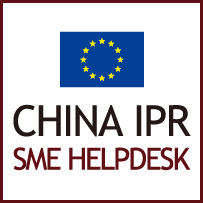China is investing heavily in alternative, renewable means to address its continually expanding energy needs. With a growing cleantech market, and strong government support for the development and adoption of new clean and energy-efficient technologies, China holds considerable opportunities for European SMEs. However, European cleantech companies need to be proactive in understanding and taking measures to minimise intellectual property (IP) risk when doing business here, in order to secure lasting success.
In the last issue of EURObiz the China IPR SME Helpdesk discussed considerations for building a cleantech IP portfolio and the importance of utility models. In this concluding part, the licensing and sale of IP are explored, with a case study of a European cleantech SME in China.
Licensing and Sale
Licensing and sale of IP can be a potentially lucrative source of cash flow for cleantech businesses with high-value IP. However, the decision to monetise IP through licensing or sale is one that must be taken only after careful consideration of a number of important factors. In terms of patent licensing, arrangements broadly fall into two categories – ‘carrot’ and ‘stick’ licensing.
‘Carrot’-licensing
This refers to a licence taken on voluntarily by the target licensee without the need for the patent owner to sue. A large part of bringing potential licensees to the negotiating table is to be able to demonstrate strong rights to a credible technology that requires specific know-how to fully realise. A cleantech business can be successful with this approach when a patent licence is coupled with a licence to the cleantech business’ know-how related to implementing or practicing the technology. Once interest is secured, licensing negotiations should be conducted under a non-disclosure agreement (NDA) that contains a promise by the target licensee not to file for a declaratory judgement (a lawsuit brought by the target licensee to declare that the IP holder is not using and is infringing rights to the technology) during the negotiations.
‘Stick’-licensing
‘Stick’-licensing is a necessary option when a third party is already using a technology without a licence from the owner of the IP, thereby infringing the owner’s rights. A business may pursue litigation to compel the payment of royalties by demonstrating that: 1) the technology is covered by their own IP; 2) the IP is valid; and 3) the business is willing to sue and enforce its IP rights. Often target licensees will not seriously consider paying royalties until this can be demonstrated; however, putting IP to the test in litigation can be risky. In all cases the validity of the IP will be challenged, and may be lost and invalidated. For this reason, many businesses do not choose to license their core IP unless they are confident of the strength of their innovations. Additionally, although a business should expect to go the distance if it intends to file a lawsuit, communicating with the potential target licensee early and frequently can be a good way to increase the chances of a settlement.
Sale of IP
When certain IP is no longer attached to a product or a core aspect of a business, it may be worthwhile to sell the technology through an IP assignment to avoid the carrying costs associated with keeping it in the portfolio. A major benefit of a sale is that a business can obtain an immediate cash flow, whereas license royalties typically take two to three years to materialise once a product hits the market. When trying to decide whether to sell IP, it can be a good idea to engage an outside consultant to determine the value of the IP, as potential purchasers may estimate different values. One way to mitigate the risk of miscalculated value is to couple a sale with a grant-back licence. In this arrangement, the buying party grants a licence to the selling party to use the technology after the sale. It is also best to try to negotiate the right to sub-license as part of the grant-back, in order to keep as many options available as possible.
SME Case study
Perpetual Motion is a small German company specialising in the manufacture of intelligent drives that reduce energy usage of industrial machinery by more than 80 per cent. The company owns several patents covering drive designs in China, but most of the precise engineering processes needed to economically manufacture the drives are in the form of know-how – potential trade secrets. In addition, Perpetual Motion uses special software to control and improve the efficiency of the intelligent drives.
Looking to quickly obtain cash flow to cover upcoming financing needs, Perpetual Motion chooses to explore licensing the technology to industrial machinery manufacturers in China. After meeting with several manufacturers, Guangdong Green Machinery Co Ltd (GGM) expresses an interest in obtaining an exclusive licence. Perpetual Motion agrees and the parties sign a non-disclosure agreement (NDA). As part of the arrangement, Perpetual Motion proposes to grant an exclusive licence to GGM for Perpetual Motion’s patents and know-how in China. During negotiations, GGM conducts due diligence on Perpetual Motion’s patents. However, negotiations stall when the parties cannot agree on royalties.
Undeterred, Perpetual Motion then decides to seek a Chinese partner to sell its products in China. They find Mr Liang, who owns Zhejiang Components Co Ltd (ZCC), a small components manufacturing company that also owns some patents for certain manufacturing processes. Perpetual Motion and ZCC enter into a NDA and a manufacturing services agreement. Mr Liang agrees to manufacture the intelligent drives to customer specifications. Perpetual Motion decides to keep design-to-fit work in Germany, and Mr Liang agrees to set up a secure area in his factory. As part of the arrangement, Perpetual Motion sets up secure file servers from which Mr Liang can access sensitive documents related to the precise engineering processes needed to manufacture the intelligent drives. Perpetual Motion also seconds several technical managers to the factory to train authorised employees on the manufacturing processes. Each of the employees signs a confidentiality agreement and an agreement not to compete, and are provided with training only on the specific processes that they will work on.
After a successful six months of operations, Mr Liang informs Perpetual Motion that GGM is offering similar lower-priced intelligent drives but which do not achieve the same energy savings as Perpetual Motion’s intelligent drives. After further investigations, Perpetual Motion suspects GGM is infringing its drive design patents. Although Perpetual Motion has the resources to engage in litigation, Perpetual Motion decides not to sue GGM and risk having its patents invalidated. Instead, the company uses the resources which would have been used in the litigation to reinvest in research and development. Six months later, Perpetual Motion has developed a new manufacturing process that reduces the cost of manufacturing the intelligent drives and new software, which further improves the efficiency of the intelligent drives.
IP Lessons
- Develop an IP strategy for the medium to long term, and determine how IP will fit into the overall business strategy in China.
- It can be difficult to secure a licence and royalties from a potential licensee unless it can be clearly demonstrated that non-patented know-how is essential to making the product commercially viable.
- The decision to sue and enforce IP involves considering the strength of the patents, the resources necessary to pursue litigation through to its conclusion and defend likely invalidation actions against the patents, and protecting the core aspects of the business’ competitive advantage.
- Document and use specific policies and procedures, including NDAs, when disclosing sensitive proprietary information.
- Look for good partners that do not have direct conflicting interests and who are likely to respect IP.
The China IPR SME Helpdesk is a European Union co-funded project that provides free, practical business advice relating to China IPR to European SMEs. To learn about any aspect of IPR in China, visit our online portal at www.china-iprhelpdesk.eu. For free expert advice on China IPR for your business, e-mail your questions to: question@china-iprhelpdesk.eu. You will receive a reply from one of the Helpdesk experts within three working days. The China IPR SME Helpdesk is jointly implemented by DEVELOPMENT Solutions and the European Union Chamber of Commerce in China.






Recent Comments